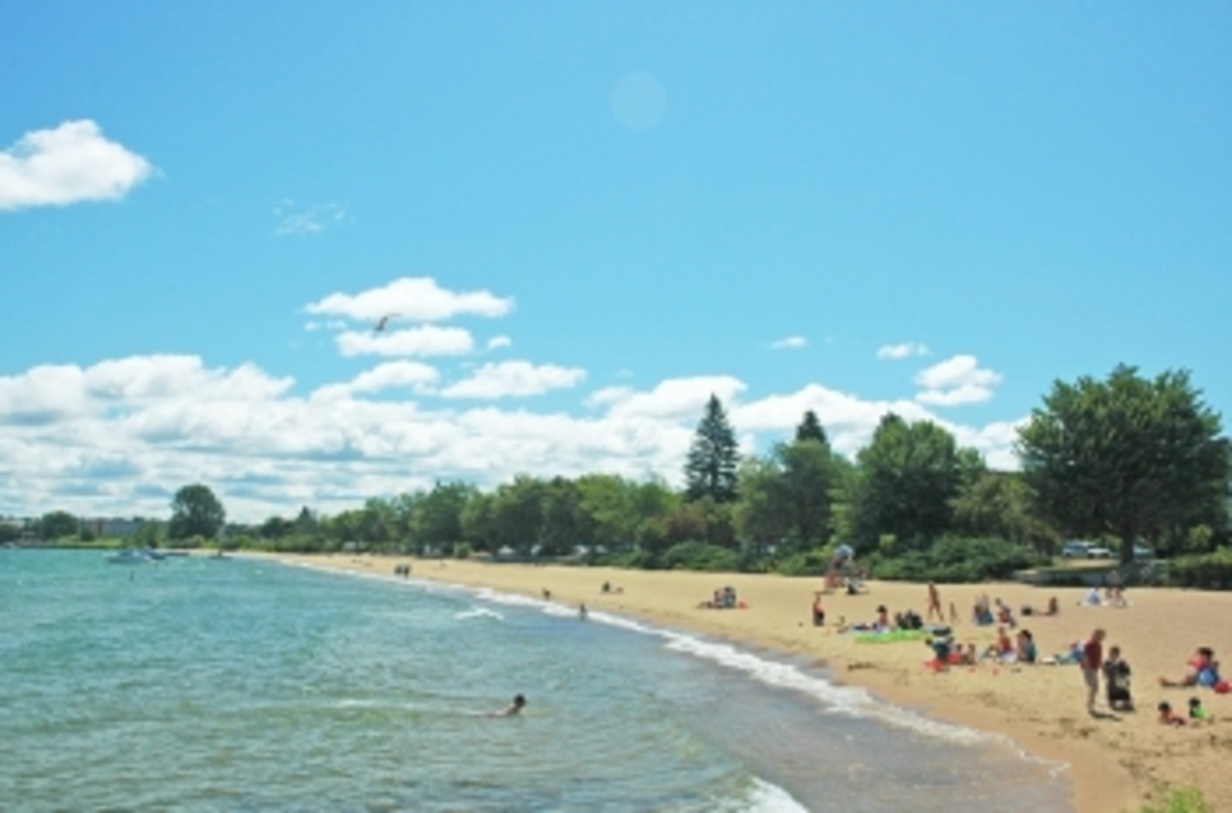
Sewage Leaks, Beach Closures: Fact & Fiction
June 16, 2016
The accidental release of 3,000 gallons of untreated sewage into Kids Creek this weekend prompted no-swim advisories at several local beaches – and questions from the public. Why do these types of closures seem to keep happening? Shouldn’t the city upgrade its sewer lines? Why weren’t signs posted immediately warning beachgoers of the leak?
The Ticker asked Traverse City Director of Public Services Dave Green and Program Director Sarah U’Ren of The Watershed Center Grand Traverse Bay to help answer those questions – and to clear up some of the misconceptions about the city’s water system.
The Leak
Saturday’s leak was caused by a blockage in a 12-inch sewer main near Cedar and Sixth streets at approximately 2pm. There was no pipe or mechanical failure, explains Green. Instead, solid materials – including an unusual amount of grease – backed up in the main and eventually clogged most of the pipe flow. The sewage then began slowly seeping up through a manhole on the street and – “following the flow of gravity,” says Green – trickled down across the road into the low point of Kids Creek.
A city employee who lives near the site spotted the leak. Within an hour, city staff were running cleaner through the pipe. In the meantime, the Grand Traverse County Health Department – which is the legal entity responsible for issuing public health or beach advisories – alerted the media about a no-contact advisory for Kids Creek, the Boardman River and several West Bay beaches.
Both U’Ren and Green note the advisory was primarily precautionary. While 3,000 gallons “sounds like a lot,” says U’Ren, the city processes between 5.5 and 6 million gallons every day during the summer at its wastewater treatment plant. “When we’re talking about sewage overflows, 3,000 gallons is actually not that much,” says U’Ren. “It likely was mostly diluted by the time it reached the bay.” The pollution would then have rapidly broken down in the sunlight, she says, since UV light breaks down bacteria.
Recurring Problem?
In the wake of the leak, U’Ren says two major public misconceptions began circulating about the city’s water system. The first was that the city’s sanitation and stormwater runoff pipes are connected to the same system – increasing the risk of sewage overflows during rain events. Some Michigan cities do run on one system, but Traverse City’s sanitation and stormwater runoff lines are “totally isolated and separate from each other,” says Green. (The city’s drinking water supply, which comes from East Grand Traverse Bay, is also separate and was unaffected by the sewage leak.)
Sanitation lines carry sewage to be treated at the wastewater treatment plant; the purified water is then released into the Boardman River. Stormwater runoff pipes, however, empty directly into the bay. That leads to the second misconception, says U’Ren: that sewage leaks or sewer system failures are a recurring problem in Traverse City.
“Stormwater runoff issues happen way more often and impact our beaches far more than sanitary sewer overflows do,” she says.
Michigan Department of Environmental Quality (MDEQ) data backs that claim. Since 2008, Bryant Park – at high risk for elevated bacteria levels due to its proximity to two storm drains – has closed only twice due to sewage overflows. One of those closures was this weekend; the other was in 2014. By contrast, the beach has closed seven times in the same time period due to elevated E.coli levels caused by stormwater runoff. That pattern also holds true of Traverse City's other popular in-town beaches.
Improving Public Safety
Both Green and U’Ren believe there are several ways to help reduce beach closures in the future – and improve public notification when they do occur. Many beachgoers complained that while the sewage leak happened at 2pm, signs didn’t go up at the beaches until 5 or 6pm. Green says the city had to first stop the leak, then work with Health Department staff to issue an advisory, then track down parks employees on a Saturday to get out signs and take them to the beaches.
“It did take some time, and we’re going to look at improving that,” says Green. He also wants to explore the possibility of using the county’s CodeRED system to immediately send text alerts to users when there’s a sewage overflow or beach advisory.
While sewage leaks themselves are uncommon, Green notes the city is midway through a complete survey of its 80 miles of underground sewer pipes – a project funded by a state SAW grant that will allow the city to identify and address any vulnerable lines. In the meantime, U’Ren says the public can take steps to reduce both sewage and stormwater runoff problems.
“Be careful what you’re flushing down the drain,” U’Ren says, pointing to the grease build-up that contributed to Saturday’s leak. “For stormwater runoff…there are things you can do to decrease E.coli. Pick up after your dogs. And don’t feed ducks and seagulls on the beach. If you feed them there, they’ll poop there. All that waste goes into the bay.” For that reason, U’Ren has one last main tip for the public: Avoid any beaches near storm drains immediately following a heavy rain.
“The only time we really see these elevated E.coli levels…and closures is right after rain events,” she says.
Comment






